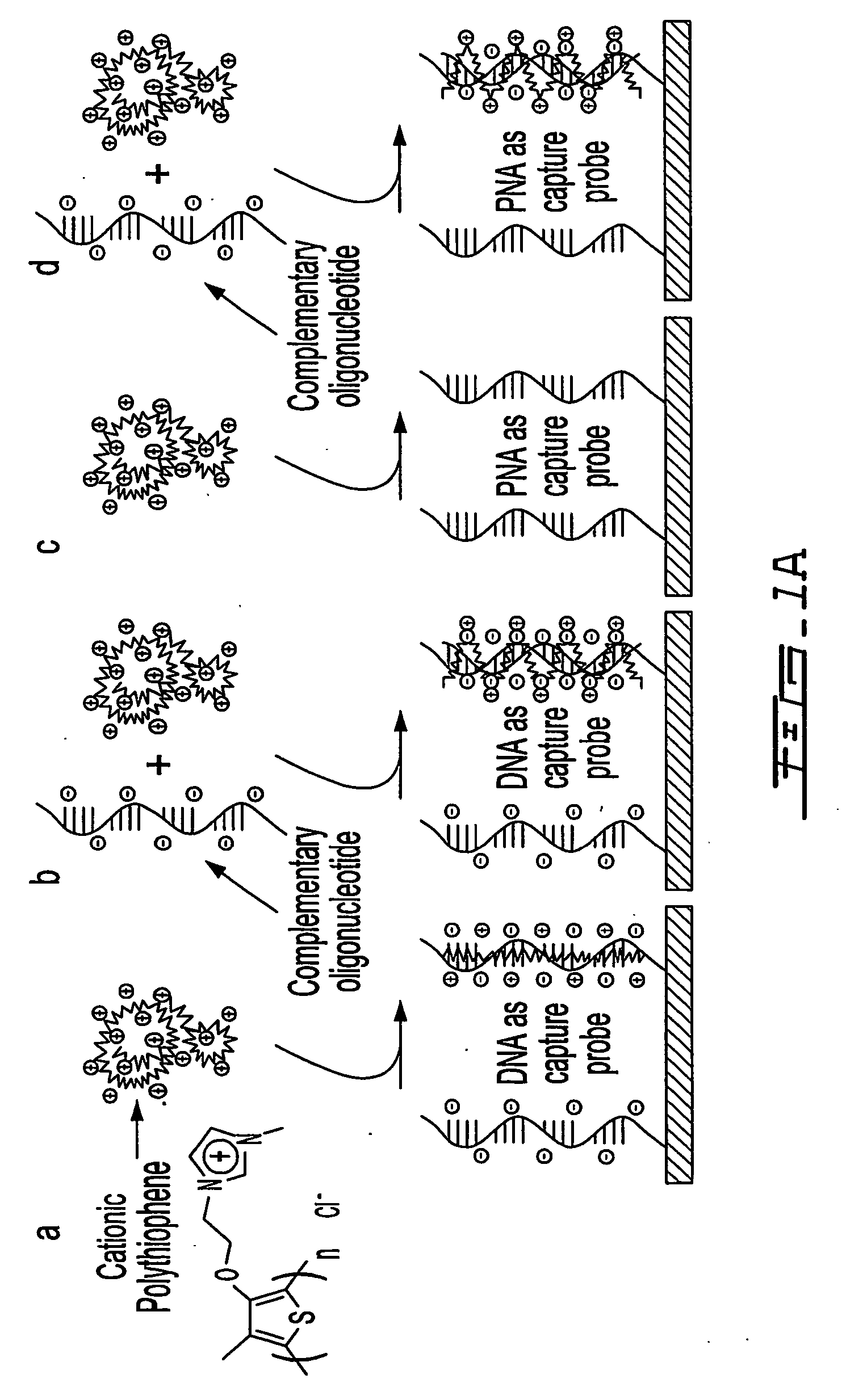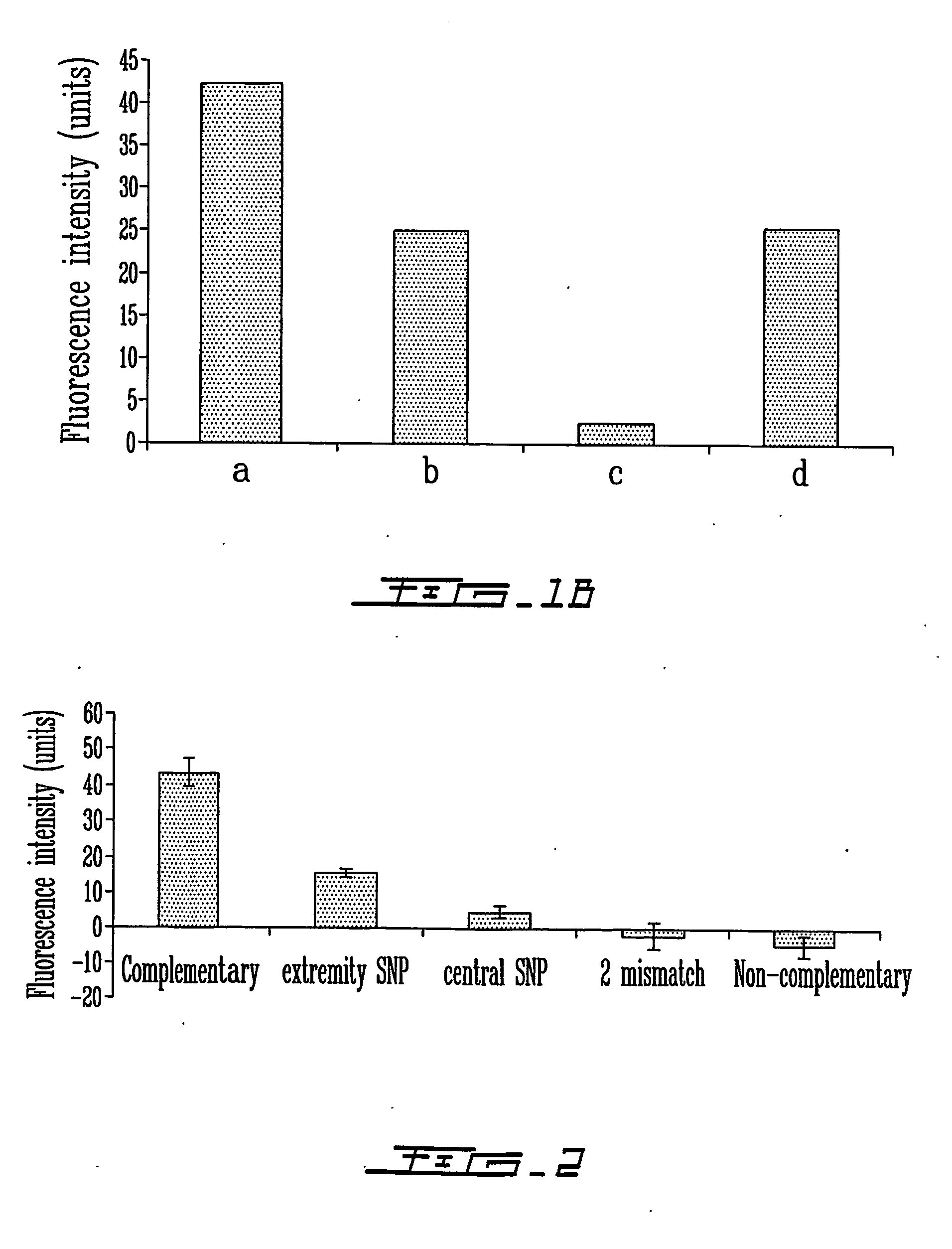System for charge-based detection of nucleic acids
a nucleic acid and charge-based technology, applied in biochemical apparatus and processes, specific use bioreactors/fermenters, after-treatment of biomass, etc., can solve the problems of lack of speed, sensitivity, or practicality, background signal, and complex reaction mixture, etc., to achieve better signal
- Summary
- Abstract
- Description
- Claims
- Application Information
AI Technical Summary
Benefits of technology
Problems solved by technology
Method used
Image
Examples
example 2
Detection of Target PCR Amplicon DNA Using Fluorescent Cationic Polymers and PNA Capture Probes.
[0111] Same as example 1, except that hybridization to the capture PNA or DNA probes were performed using 160 base pairs (bp) amplicons produced by asymmetric PCR. Recently, Germini et al. also reported that the hybridization of amplicons to PNA probes was more efficient with single-stranded PCR products (Germini et al., 2004, J. Agric. Food Chem., 52:4535-4540). Hybridization was performed exactly as described above for oligonucleotides except that the hybridization time was extended to one hour at 22° C. The amplicon at the final concentration of 2.9 nM in standard hybridization buffer (described above) was used for the hybridization. As shown in Example 1 for detection of a complementary DNA oligonucleotide, detection of single-stranded amplicon with the polymer biosensor was demonstrated when hybridized to a PNA probe (data not shown).
[0112] PCR amplifications were performed from 1 ...
PUM
| Property | Measurement | Unit |
|---|---|---|
| temperature | aaaaa | aaaaa |
| diameter | aaaaa | aaaaa |
| volume | aaaaa | aaaaa |
Abstract
Description
Claims
Application Information
 Login to View More
Login to View More - R&D
- Intellectual Property
- Life Sciences
- Materials
- Tech Scout
- Unparalleled Data Quality
- Higher Quality Content
- 60% Fewer Hallucinations
Browse by: Latest US Patents, China's latest patents, Technical Efficacy Thesaurus, Application Domain, Technology Topic, Popular Technical Reports.
© 2025 PatSnap. All rights reserved.Legal|Privacy policy|Modern Slavery Act Transparency Statement|Sitemap|About US| Contact US: help@patsnap.com


